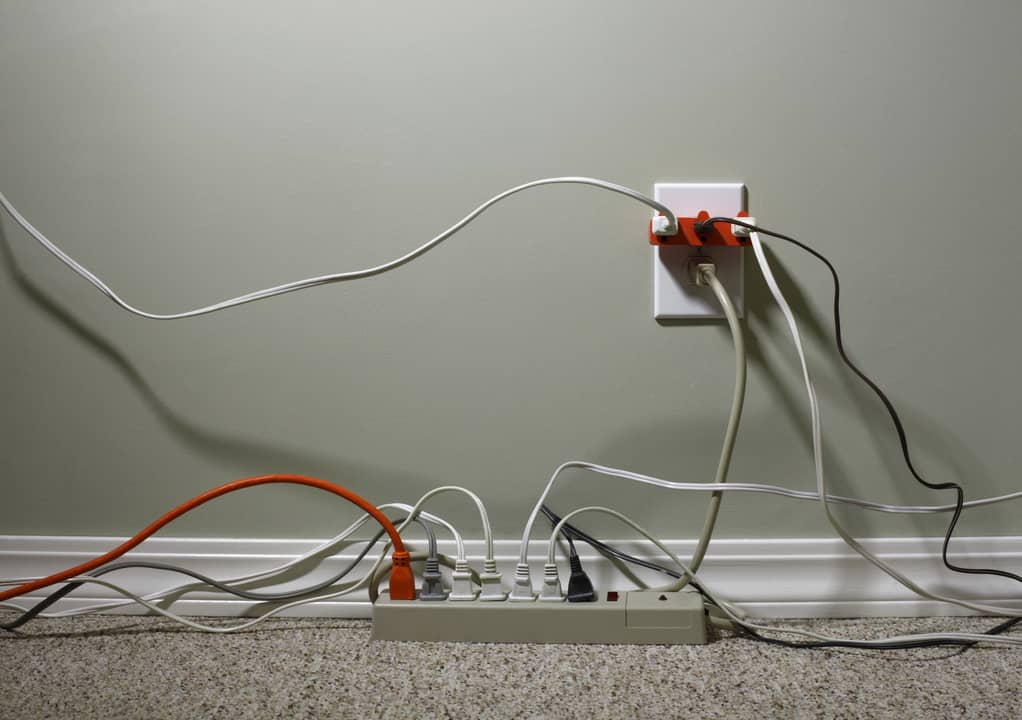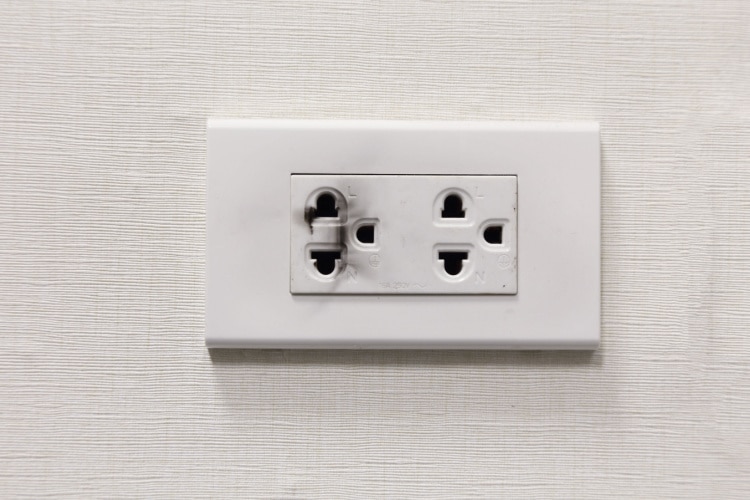When it comes to household electricity, it’s important to understand your circuits’ capacities and constraints. One frequently asked question is, “How many outlets can a 15 Amp circuit handle?”

There is no particular limit regarding the number of outlets, provided that none of them would cause your 15 Amp circuit breaker to trip. However, the National Electrical Code recommends using only up to 80% of a circuit breaker’s maximum capability for safety reasons.
Let’s dive into understanding why.
How Many Outlets Can a 15 Amp Circuit Handle?
The National Electrical Code (NEC) doesn’t specify the maximum number of outlets per circuit. Instead, it limits the consumed electricity of the circuit to 80% of its capacity.
A restriction of this kind is known as the 80% NEC rule and is put in place to prevent electrical overloads and fires. It implies that the circuit can only provide stable electricity (the NEC defines this as 3 hours or more) at only 80% of its full capacity.
Here’s an example. If you want to connect 12 outlets on a 15 Amp circuit, you can do so as long as you don’t draw more than 12 Amps of power through the circuit at any point in time.
NEC also restricts the upper limit per outlet to 1.5 Amps.
So, respecting the NEC’s rules, if you’re limited to 12 Amps per 15 Amp circuit, and 1.5 Amps per outlet, you can wire a maximum of 8 outlets before exceeding the 80% rule.
The Importance of Preventing Electric Overload
Overloaded circuits/outlets cause over 5,000 home fires each year, with the number increasing during the holiday season.
An electrical overload occurs when outlets take more power than a circuit can manage. If this happens, your circuit breaker will trip, instantly cutting off the gadget’s power.

It does so to avoid an electrical fire. Otherwise, the cables would heat and melt, the wires would become damaged, and an electric fire could easily break out in those circumstances.
Signs of Electric Overload
How can you tell if your circuits are overburdened? Other than the circuit switches tripping, there are several signs indicating an overloaded circuit, including:
- The lights in your rooms are flickering
- The outlets and switches are buzzing
- You have warm-to-the-touch outlets and power plugs
- Burning smell around your outlets or circuit
- Burned receptacles
How to Avoid Electric Overload
The best method to prevent electric overload is to use designated circuits for appliances consuming a lot of power. A dedicated circuit only serves one outlet, supplying all its power to one plugged-in appliance.
The National Electrical Code requires dedicated circuits for the following appliances:
- Washing machine
- Air conditioner
- Refrigerator
- Oven
- Freezer
Another step is to ensure all wires are in good condition and do not pose a security threat. If any of the wires are damaged, stop using them instantly.
Additionally, consider unplugging gadgets that you don’t use at the moment. If multiple energy-draining electronics are used simultaneously, ensure they’re on dedicated circuits. If otherwise, create a rotating plan for their use to avoid overloading your circuit.
Also, the circuits in older houses, in particular, can’t manage the electricity we use in our contemporary lives today! So if your circuit can’t keep up, it may be time for an upgrade.
The good news is that you don’t have to deal with electrical problems alone unless you’re an expert electrician.
If you have an overloaded circuit or want to add more outlets to your house, certified electricians are there to help. Electricity is not a thing to DIY with.
Can Circuits & Lights Be Wired on The Same 15 Amp Circuit?
The circuit makes no distinction between receptacles and light fixtures. Installing plugs and lamps on the same 15 Amp circuit is feasible.
Here’s how to do so. If you increase the number of lights on a circuit, you must reduce the number of outlets. For instance, if you wire two light fixtures to a 15 Amp circuit, the circuit can only support six receptacles.
However, it becomes a potential hazard if you are unsure of which receptacles and lights are on which circuits. The common consensus is that combining outlets and lamps complicates the electrical system and is generally discouraged.
Because of this, receptacles are typically kept on one circuit, and light fixtures are kept on a separate circuit when wiring a home.
While connecting lights and outlets to a 15 Amp circuit is possible, you must first confirm that this setup complies with your local and National Electric Code (NEC).
Conclusion
The National Electric Code doesn’t restrict the number of outlets wired on a 15 Amp circuit.
Instead, it specifies that a single circuit cannot give more than 80% of its total capacity. The goal of doing this is to prevent overwhelming the circuit.
Therefore, if you want 25 outlets on a 15 Amp circuit, you can certainly do so, but you must never pull more than 12 Amps from that single circuit simultaneously.
The National Electric Code recommends using 1.5 Amps per outlet as the safest approach. If we apply this to a 15 Amp circuit, wiring 8 outlets per outlet should be your upper limit.